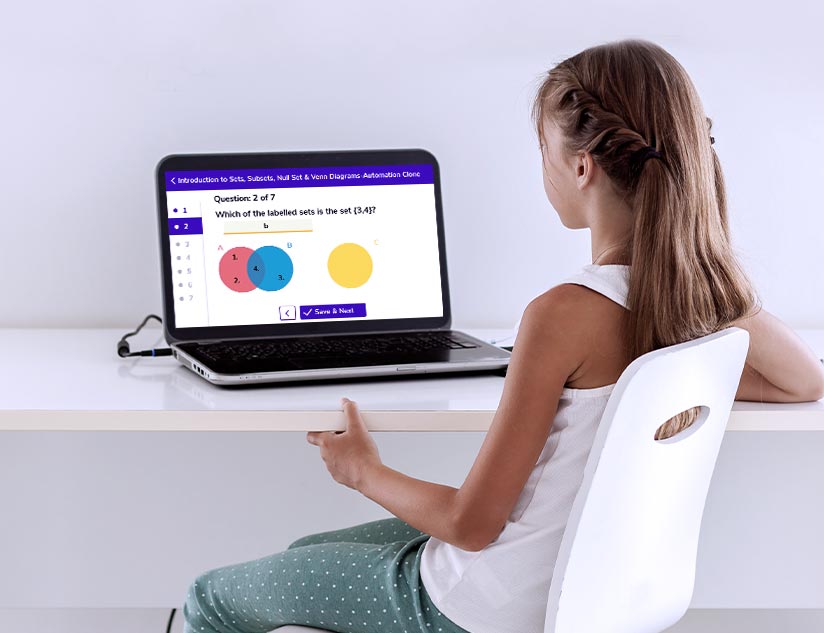The education sector is gradually transitioning from traditional assessment approaches to more practical, technology-based solutions. As a result, the K-12 Digital Instruction and Assessment market is projected to reach $42 billion by 2025, with demand more than doubling between 2022 and 2025.
In addition, The State of Assessment in K-12 Education survey, conducted among 1058 teachers and administrators across the US in 2021, revealed that while 50% of educators viewed state summative assessments negatively, 94% of them said they were more likely to use formative and interim assessments because they helped improve student performance. More importantly, more than two-thirds of the teachers surveyed believed that assessments should help better the understanding of students’ individual areas of improvement and needs, inform classroom instruction and lead to a better understanding of learning materials.
Our experience with our powerful assessment platform has been that it can help educational institutions conduct secure and scalable online exams while significantly reducing the administrative burden of organizing and running exams. Also, technology support for evaluating various types of question formats can substantially lower the workload for educators. At the same time, students can receive immediate, personalized feedback that helps them improve their academic outcomes.
Here’s a look at how a robust digital assessment platform can help the education sector.
1. Enhanced Support for Multiple Question Types
Online assessment platforms allow educators to include many question types for evaluation, including FIB, MCQ, Match, case studies, and coding exercises. It makes the entire process more interactive and engaging while improving the assessment efficacy.
A significant advantage of technology-enhanced questions is that they allow learners to demonstrate more complex thinking and share their understanding in a way that’s difficult to assess using traditional means. For instance, performance-based assessments encourage learners to synthesize information from multiple sources, analyze it, and share their conclusions.
Additionally, computer-based assessments can be tailored to help learners with disabilities. For instance, screen readers, magnification tools, and text-to-voice or voice-to-text apps allow those with visual, auditory, and motor impairments to complete assessments more efficiently. Moreover, with multilingual support, assessments can be conducted in various languages to enhance inclusivity.
2. No Need for Physical Exam Centers
Educational institutions have realized that teaching and evaluating methods do not have to be restricted to physical settings. Instead, learners can use mobile devices and laptops to complete assessments anytime, anywhere.
Moreover, physical exam centers typically have enormous administration overheads and require additional efforts for scheduling and administering the examinations. But online assessment platforms completely remove such overheads and allow all exams to be managed centrally with fully automated candidate notifications and procedures.
3. Scalable Solution with Global Reach
When physical exam centers are not mandatory, institutions providing the assessment can cater to candidates irrespective of geography. This means they can expand their reach and support education for students worldwide. It also offers them a chance to provide learning resources and standardized evaluation techniques to those needing further education development and new knowledge, especially in remote areas.
4. Greater Flexibility for Learners
For the vast majority of learners, time is precious. With online test platforms, educators can offer them complete flexibility to take the test in a location of their own choice and at a time of their convenience. It can give them a significant competitive advantage, especially for full-time employees.
It can also help increase their motivation to improve their performance since online assessments offer more control and user-friendly interfaces that can be designed to resemble their learning environment and recreational activities.
5. Efficient Automated Evaluation
Another significant advantage of online assessments is that they are easier to evaluate and faster to grade, with some even having an auto-score option. For instance, educators can include select-response test items (like multiple choice or True/False) that can be scored instantly. It allows learners to immediately check their performance, while educators can make real-time instructional changes based on assessment evidence. It also gives educators more time to focus on feedback, which is essential to achieving learning objectives.
Additionally, some online test platforms help with open-ended assessments as well. They allow educators to use rubric extensions, such as Orange Slice or Google Sheets add-ons and eliminate the highly time-consuming grading process.
Our assessment platform includes a machine learning-powered evaluation matrix that enables automated grading of essay-type or subjective, long-form answers. This saves educators considerable time and effort while eliminating human bias or fatigue-based errors.
Traditional learning and assessment approaches undoubtedly benefit and will continue to be a part of the education industry. However, the education sector is today open to exploring alternative online learning and assessment tools that may be more beneficial to both learners and educators.
A recent study revealed that many learners considered online learning and assessment experiences more beneficial in terms of increased flexibility, inclusivity, and accessibility. It also supported academic self-efficacy and helped reduce their examination stress. Thus, it makes sense to maintain and improve the use of online assessments in the learning process.
Contact us to learn how you can use our user-friendly and feature-rich digital assessment platform to improve the efficacy of your education or assessment program.















